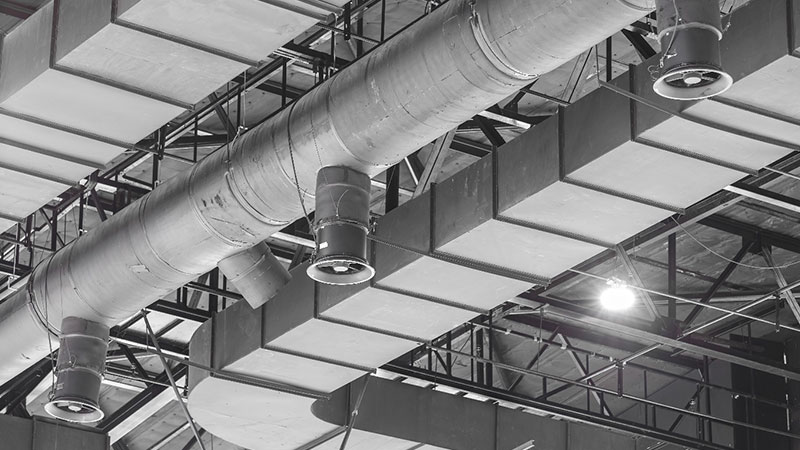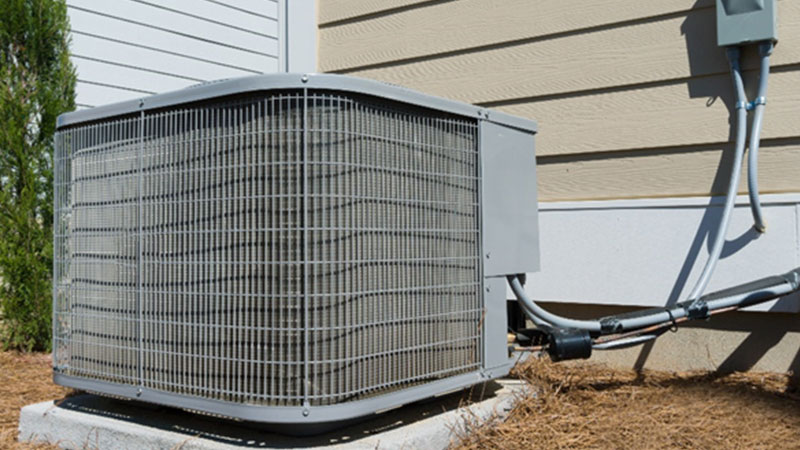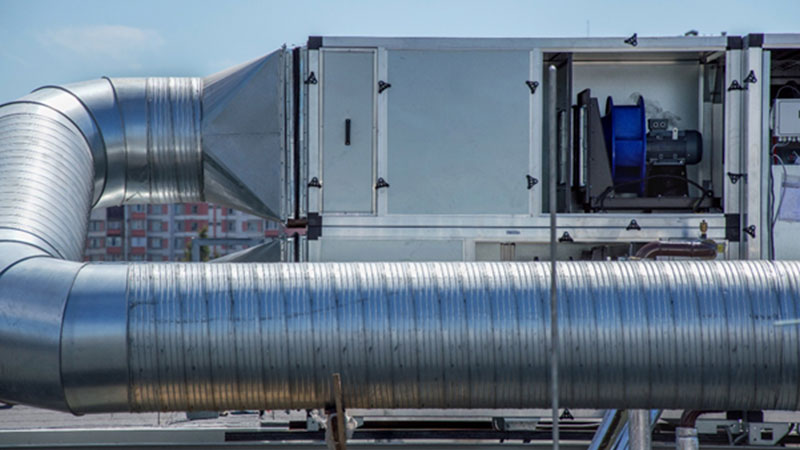What is ducted air conditioning – Full Guide
When you’re renovating a residential space, you have a lot of choices to make. Choosing a new air conditioning system may not be as much fun as choosing new furniture, but it’s just as important to get it right.
Contractors are probably throwing a lot of options at you, maybe without a whole lot of explanation. Here’s a primer on two fundamental types of air-cooled HVAC systems, and the information you need to choose which is right for you.
What’s the difference between ductless air conditioning and ducted air conditioning?
In a DUCTED AIR CONDITIONING SYSTEM, there are air ducts made of sheet metal inside the walls and ceilings of your residence. These ducts often serve both your heating and cooling systems. Warmed or cooled air travels from the central air conditioner unit or furnace through the ducts and is delivered to each room in your residence via vents.
As the name implies, a DUCTLESS AIR CONDITIONING SYSTEM (often called a ductless mini-split) doesn’t have ducts in the walls to distribute air. Instead of cooling air with one central indoor air handler and blowing it through ducts, the ductless air conditioning system sends refrigerant directly to multiple small air handlers (also called blowers) that are installed throughout your residence. These air handlers remove heat from each room individually. They look like small boxes installed on the wall or the ceiling of each room.
When to choose ducted air conditioning
1. THE SPACE HAS EXISTING DUCTS. If you already have ductwork installed and in good condition, most experts will recommend going with a ducted system. Installation is simply a matter of hooking up the new unit to the existing ventilation. It’s quicker and less expensive.
2. HUMIDITY IS A CONCERN. Ducted air conditioning systems are better at controlling humidity. The air handlers in ductless air conditioning lack the mechanisms needed to remove much moisture from the air and drain it away.
3. YOU WANT BETTER AIR FLOW. Ducted air conditioning systems also provide better air circulation. Since ductless air conditioning systems cool the air in each room individually, there is less air movement throughout the space, sometimes leading to stagnant air and air pressure issues.
4. AESTHETIC CONCERNS. Appearance is also an important concern in a residential space, and a reason you might want to choose a ducted air conditioning system. The air handler boxes mounted on the wall or ceiling of each room for a ductless air conditioning system are not always ideal from an aesthetic perspective. With a ducted system, everything is hidden behind walls and in crawl spaces.
YOU WANT TO REDUCE MAINTENANCE EXPENSES. Ducted air conditioning systems are easier and less expensive to service since there are fewer components. They only require occasional cleaning. There’s just the outside unit and the single indoor air handler. On the other hand, ductless air conditioning systems have air handlers in each room that require service.
When to choose ductless air conditioning
1. THERE’S NO ROOM FOR DUCTS IN THE WALLS OR CEILINGS. Especially in a New York City apartment or brownstone, who wants to give up those gorgeous high ceilings to make room for air conditioning ducts? If you want to keep your high ceilings, or there’s just no room for ducts, then ductless air conditioning is the answer.
2. YOU’RE ADDING A ROOM TO AN EXISTING SPACE or adding cooling to a space like a garage or work room. In this situation, it may be costly or difficult to add ducts to the new space and connect to your existing system. Or your system may not have the capacity to cool the additional space, but you don’t want to replace it.
Instead, you can supplement with a small ductless air conditioning system just for the new space. Sometimes a ductless unit is used even in new construction to provide zoned cooling for an area that’s not frequently used.
3. YOU WANT TO DECREASE DUST. Since forced air is not traveling throughout the space via ducts where dust can collect, there is less dust introduced to your rooms.
4. YOU WANT MULTIPLE COOLING ZONES. Since ductless air conditioning systems have separate air handlers in each room, these can be independently controlled for different cooling needs. That means you can lower the temperature in the living room where you’re entertaining a group of people, while increasing the temperature in the bedroom where the baby is sleeping.
Keep in mind that zoning and independent temperature control can also be accomplished with a VRF system, which can be ducted or ductless. VRF systems are a relatively new, more sophisticated technology with many benefits for the luxury homeowner.
Whichever system you choose, there’s one important consideration: make sure you choose a qualified installer.
Air conditioning is a complex system that needs to be properly designed to meet your needs, and configured by an expert. Make sure your contractor brings in a qualified HVAC contractor to do HVAC design and installation.
Air conditioning is often one of the prime considerations when dealing with commercial or residential buildings. Whether you are renovating your house, or drawing up plans for your new dream home, you will inevitably be faced with the choice between a ductless system and a ducted one.
This can quickly become a daunting task.
Both ducted and ductless heating or cooling systems come in multiple types under several brands. In this guide, we will be covering all the basics about these two systems, along with the advantages and disadvantages of each. By the time you’re done reading this, you will be able to make a more informed decision about which system is best for your home.
Ducted Air Conditioning Systems

As the name suggests, ducted air conditioning provides heating or cooling through a system of ducts spread out all over your home or commercial space. A central unit, consisting of a condenser, compressor, and an air handling unit, is usually located in the basement, attic, or garage. It provides cool or hot air, which is then distributed throughout the building through a series of ducts and vents, providing the appropriate climate control.
Types of Ducted Air Conditioning Systems
Ducted systems are also called central air conditioning systems. They can be broadly segregated into two types, i.e., Split central air conditioners and packaged central air conditioners.
Split Central Air Conditioners

These systems are by far the most common type of central air conditioning system currently being used. They consist of the condenser and compressor placed outside in a metal cabinet in one package. A separate evaporator is placed indoors within a segregated container, usually located in a closet or the attic. The outdoor unit provides the refrigerant to the evaporator, which then cools the air and pumps it down the network of central air ducts through an air handling unit.
Split central air conditioners are usually three times the size of an equivalent packaged central air conditioner. Splitting them in two makes the size much more manageable. Despite their size, split systems have higher SEER ratings than packaged air conditioners. In many split-system air conditioners, the indoor cabinet also contains a furnace or a heat exchanger of a heat pump. Moreover, split systems are an economical choice for homes that already have a furnace but no air conditioner as they can utilize the same furnace ductwork.
Packaged Central Air Conditioners

On the other hand, in a packaged central air conditioner, all the components, including the condenser, compressor, and evaporator, are in one single unit. You can either have these installed on a concrete slab next to your house or the roof.
This system is best suited for commercial buildings, or already built homes, where space can often be limited indoors. Central air ducts then circulate the air from the air handling unit into the room and move it back to the unit. These systems can be coupled with heating coils or furnaces to provide heating facilities too.
Packaged central air conditioning systems generally provide lower efficiencies than split systems but have the advantage of not taking up any space inside your home.
Before going for packaged central systems, be careful to check out your outdoor space well in advance. These systems can be heavy, so the roof should be able to handle the load adequately. Or, if you’re placing it on the ground, concrete emplacements need to be dug in beforehand.
Another important consideration while choosing ducted air conditioners is the ductwork. Regardless of which type of ducted air conditioning system you choose, central air ducts will take up a significant amount of space in your home. So it’s important to keep that in mind and see if a ducted system matches your home’s layout and design.



